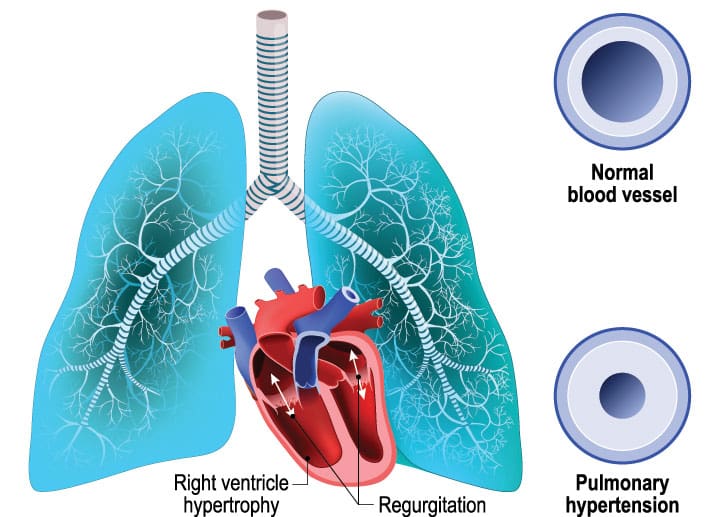When you know it’s time to leave, keep it professional.
Takeaways:
- Signs of workplace discontent include stress, negativity, cultural disconnect, work life imbalance, and lack of challenge.
- Leaving gracefully and submitting a respectful resignation letter will ensure you don’t burn bridges with your current employer.
By Maude McGill, PhD, MSN, RN-BC, and Bobbie Loveless, DNP, MSN, RN, CNE
Jennifer, an RN, has been with the same organization for over 10 years. She’s a model employee in the medical critical care unit who knows the ins and outs of the organization and could do her job blindfolded. Recently, Jennifer has been feeling apathetic about going to work. Calling out sick, doing just enough to get by, and superficially getting through the day are becoming common behavior patterns. “I don’t know what happened. I love my job and my coworkers. I just don’t have the same passion about my job that I used to.
Jennifer faces the dilemma of staying for familiarity and comfort or accepting the challenge of leaving for new opportunities. What should she do?
Do you and your organization fit?
Person-environment (PE) interaction theories have been around for about 100 years. Over time, the concept of PE fit emerged and was viewed as describing the degree to which an individual’s and an organization’s characteristics are compatible or congruent. Person-organization fit (POF), a domain of PE, addresses compatibility between individuals and entire organizations, not just the job. Individual-organizational similarities are the crux of POF. With the development of the organizational culture profile (OCP), a values-based instrument, value congruence became widely accepted as the defining variable for POF.

Seeking values congruence is a meaningful way to assess how fit with various aspects of the work environment influences individuals’ attitudes and behaviors. Outcomes of POF include increased job satisfaction and commitment to the organization, which means a person is less likely to leave. A few examples of OCP constructs include a clear guiding philosophy, an emphasis on quality, opportunities for professional growth, free exchange of information, supportiveness, fairness, and autonomy.
You may realize the existence of poor POF over time or it may occur to you all of a sudden. No matter the speed of the onset, when you think “Oh, my goodness, what am I doing here?” it’s time to review. Whether you’re a nurse in practice, administration, or education, when you begin to have feelings of disconnection from or incongruence with your organization, you should pause and reassess whether you and the organization are a good fit.
What are the signs?
Fulfillment is a requirement for life satisfaction. Many people spend over half of their adult lives in the workforce—over half of your life in an area that either provides fulfillment or doesn’t. The process of being fulfilled goes back to understanding your holistic self. Knowing what makes you happy, what keeps you growing, and what satisfies your desire to be efficient at work is valuable. Conversely, you also need to know the signs of workplace discontent.
Are you feeling stressed and negative about your current workplace position?
Feeling stressed when trying to accomplish tasks is common, but when stress and negativity are affecting your physical health (frequent headaches, tachycardia, change in your overall demeanor) it might be a sign to consider a graceful transition to another opportunity.
Do your cultural and philosophical beliefs differ from those of the organization?
A conflict in your personal philosophical beliefs of workplace structure and harmony with those of the organization can cause frustration. If these differences begin to manifest in ways that affect your workflow, this might be a sign to consider an organization that better mirrors your beliefs.
Are you losing your balance between work and life?
If you’re spending less time with your family and not meeting personal commitments because of work, you might consider looking for a job that provides a greater sense of balance.
Are you being challenged?
Nursing is a career that requires lifelong learning. While skill mastery is desired for optimal work performance, you still want to be in an environment that challenges your thinking and provides personal growth. If you’re not in a position that fosters growth, you might consider another option that allows for learning opportunities and advancement.
Are you experiencing verbal abuse, sexual harassment, or any other type of illegal behavior?
The workplace should never include incivility, sexual harassment, or any other type of intolerable behavior. If you’re experiencing any of these negative actions, it’s time to consider a change in employment, if the problem can’t be successfully resolved.
How do you leave gracefully?
Learning to leave a job gracefully is vital to your professional life. In 2016, Americans changed employment about every 4.2 years, compared to 2014 when the average person changed positions about every 4.6 years. For certain professions and age groups, the turnover rate is even higher. Experts have suggested that millennials may demonstrate the least amount of employer loyalty, with a job turnover rate as high as every 3 years.
Regrettably, not everyone considers the value of a graceful transition from one employer to the next. Fear of change and the fact that job or role transition is anxiety provoking may result in behavior that causes employees to burn bridges as they leave.
Given the high rate of job movement, use these rules as a guide to a successful transition.
- Find a mentor or supporter in your organization you can talk with confidentially before you make the decision to leave. Ask this person to help you assess the benefits and risks of a new position as well as the impact that leaving will have on your colleagues.
- After you’ve made the decision to leave, copy any personal files you might have and begin to remove nonessential items you keep at work. This will save you stress and time in the event that you leave to work with a competitor and are expected to transition quickly. However, don’t take documents that are considered intellectual property of your current organization.
- Finalize all the details with your new employer before you notify your current employer that you’re leaving. The unexpected can happen, and you don’t want to find yourself unemployed.
 After the details are settled, tell your manager first, then prepare a brief but positive resignation letter. (See Setting the right tone.) This letter isn’t the place to complain or voice concerns. If you want to submit a formal letter of concern, draft it separately and submit it to human resources. If you have concerns or suggestions for improvement, a good time to communicate those details is during an exit interview.
After the details are settled, tell your manager first, then prepare a brief but positive resignation letter. (See Setting the right tone.) This letter isn’t the place to complain or voice concerns. If you want to submit a formal letter of concern, draft it separately and submit it to human resources. If you have concerns or suggestions for improvement, a good time to communicate those details is during an exit interview.- Give adequate notification of your resignation. Some organizations have contracts stipulating employment periods; if that’s your situation, plan your departure within the break between contract periods or request to be released from your contract. If you’re not a contracted employee, 2 weeks is the standard notice. However, for some positions, such as manager, a longer notice may be more appropriate.
- Develop a transition plan with a timeline for your responsibilities. Consider the timing of assignment completion so that you can determine what will need to be completed by others. If possible, work with your successor to orient him or her. If no successor is apparent, offer to assist in developing standards for possible candidates or redistribution of your responsibilities.
- Ensure professional communication throughout the transition process with both internal and external colleagues. If you’re going to a direct competitor, you may be expected to depart as soon as you announce your decision. Be prepared with written notes to give your supervisor about what needs to be covered and who needs to be contacted. If a hasty departure is necessary, demonstrate compassion and verbally offer an apology to your supervisor. Also, be prepared for a security escort and immediate disconnection from organization communication and files if you’re going to work for a competitor. This is standard procedure when an employee transitions to a competitor; it isn’t personal, it’s just business.
- Show gratitude and humility. Personally communicate with internal and external key people with whom you’ve worked. Share appreciation for the individual experiences that you’ve had with them, and ask them for advice about how to be successful in your new role. Most important, thank them for being part of your life and offer to stay in touch.
Don’t burn bridges
Most Americans will have multiple jobs throughout their careers, so learning how to leave a job is just as important as learning how to get one. And remember the quote attributed to Walter Winchell (and others), “It pays to be nice to the people you meet on the way up, for they are the same people you meet on the way down.” In other words, don’t burn bridges when you leave an organization; you may work with these people again in the future.
After some soul-searching and talking with her mentors, Jennifer realizes that although she still enjoys critical care, she wants to transition from adults to children. Unfortunately, there are no openings at her current employer, so she lands a job at another hospital. She leaves on good terms and is soon enjoying her career again.
Maude McGill is an assistant professor of nursing and chief nurse administrator for accreditation at Regent University College of Arts and Sciences in Virginia Beach, Virginia. Bobbie Loveless is healthcare and clinical services instructor at the Biloxi Public Schools in Biloxi, Mississippi, and a faculty member at Western Governors University in Salt Lake City, Utah.
Selected references
Ashkenas R. How to leave a job gracefully: Last impressions can influence your career. Forbes. February 11, 2015.
Barrett-Poindexter J. 10 tips for leaving your job gracefully. U.S. News & World Report. June 4, 2012.
Bureau of Labor Statistics. Economic news release: Employee tenure summary. September 22, 2016.
Quast L. Job seekers: How to gracefully quit your job. Forbes. April 14, 2014.
ant4-CareerWatch-329



















2 Comments.
Great Read! Very good information.
Excellent article. Much needed reminder…